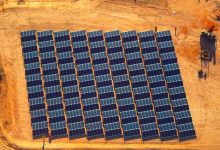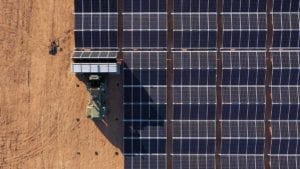Sun Cable’s $22 billion plans to build one of the world’s largest dispatchable solar and battery power stations, complete with the world’s largest subsea transmission link, have been put on the fast-track by the Australian federal government.
Minister for industry, science and technology Karen Andrews said on Wednesday that the Australian-ASEAN Power Link (AAPL) for the massive project, planned for the Northern Territory’s Barkly region near Tennant Creek, had been granted Major Project Status.
Andrews said the decision was “a strong statement… that despite the immediate challenges of the COVID-19 pandemic we will come out the other side stronger and industry is still investing in opportunities that will drive our economic recovery and create much needed jobs.”
Federal minister for energy and emissions reduction, Angus Taylor, said the Sun Cable project would maintain Australia’s position as an energy exporting powerhouse.
“Australia has long been a world leader in energy exports,” Minister Taylor said. “As technologies change, we can capitalise on our strengths in renewables to continue to lead the world in energy exports.”
As RenewEconomy has reported, the Sun Cable project – backed by billionaires Mike Cannon-Brookes and Andrew Forrest – is proposing a massive solar array of 10GW, battery storage facilities of up to 30 gigawatt hours, and a high voltage direct current sub-sea cable of 3,750kms – all the way to potential customers in Singapore. Each component will be the biggest of its type in the world, by some margin.
In May of this year, Sun Cable announced development approval for a big battery of up to 100MW/200MWh in Darwin that is designed as a standalone project, but it will likely get absorbed into the larger Sun Cable project if the design, engineering and economics stack up in the detailed modelling that is being undertaken.
In an interview with RenewEconomy’s Energy Insiders podcast, Sun Cable CEO David Griffin said the ultimate plan was for the Northern Territory project to be the first of many.
“Ultimately, we envisage a network that expands, that takes advantage of where the best renewable energy resources are, be it solar and wind in Australia, wind in New Zealand, or solar and wind in India, and we are seeing that … the potential for load growth in the areas in between is enormous.”
“Indonesia will be the fourth largest economy in the world in the 2020s. We seem to miss that in Australia – the enormity of our northern neighbours. We are absolutely developing long term plans to serve those ever-growing loads north of Australia and doing that by exploiting the renewable energy resources wherever they located, and the HVDC technology.”
In a statement on Wednesday, Griffin said achieving Major Project Status for the proposed AAPL was a milestone for the link, which would see Australia become a world leader in renewable electricity trade, generating approximately $2 billion worth of exports for Australia annually.
“This project is helping to grow a new industry, utilising intercontinental HVDC submarine transmission systems, to supply renewable electricity to major load centres in the Indo-Pacific and support the region’s low-emissions goals,” he said.








